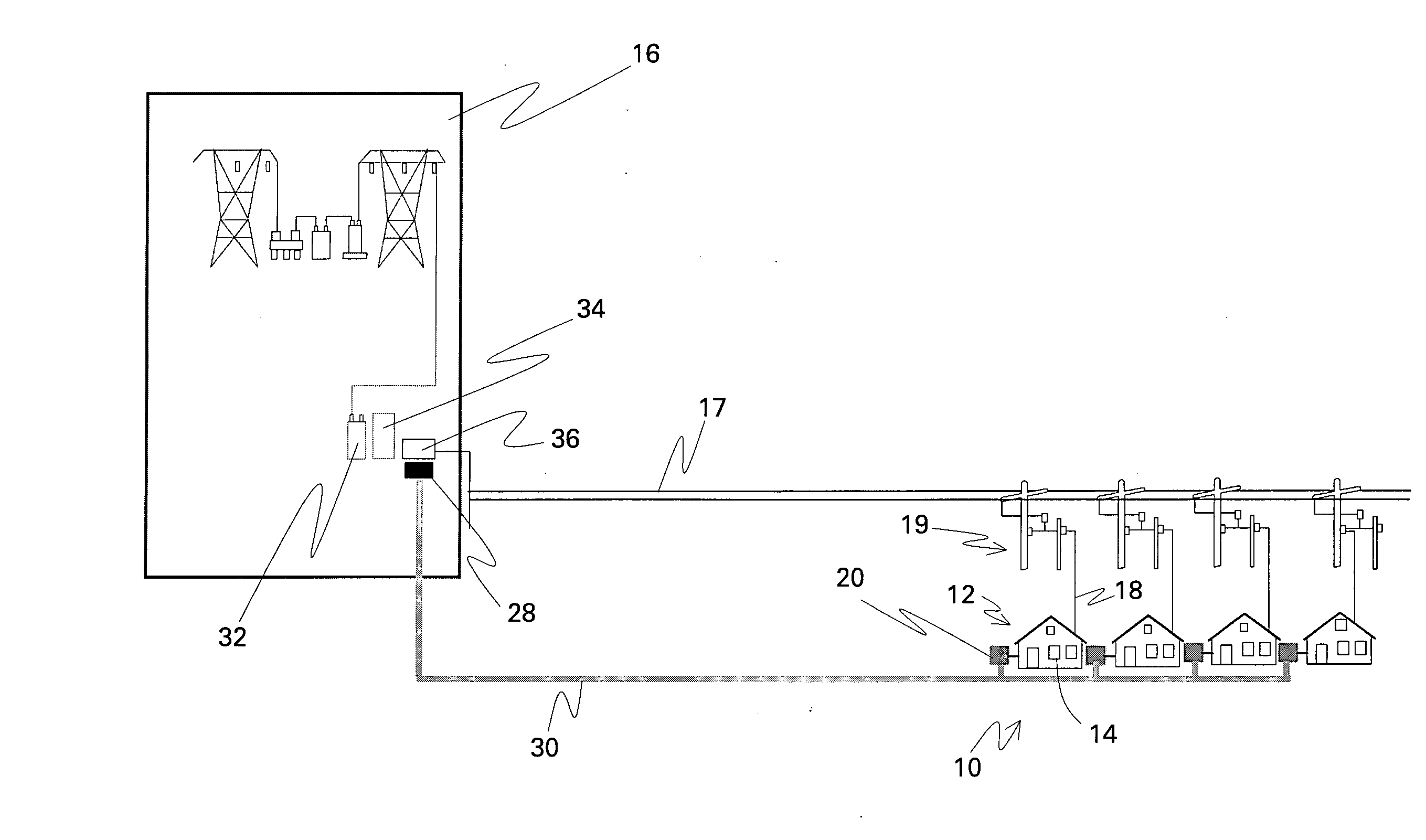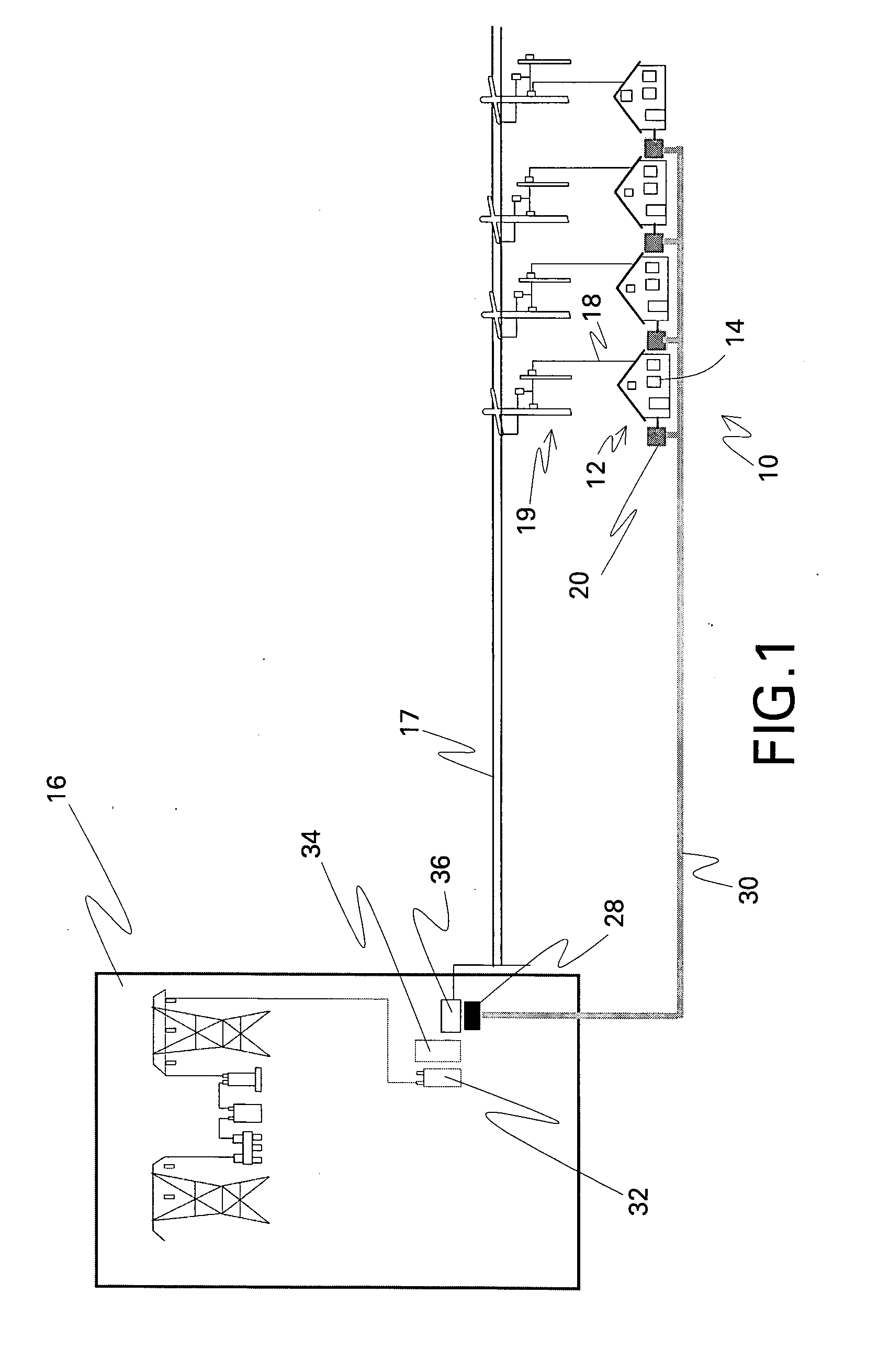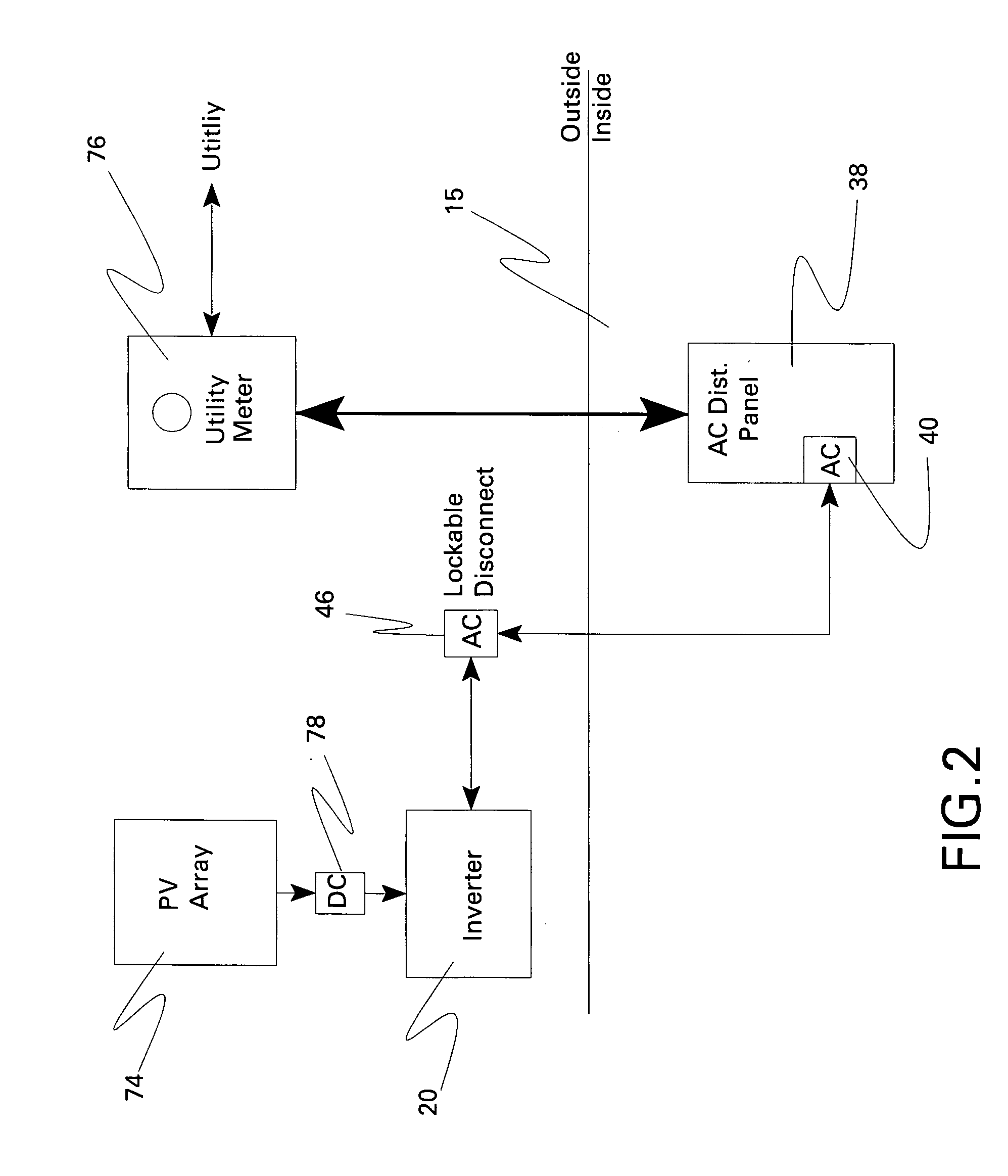System and method for providing reactive power support with distributed energy resource inverter
a technology of distributed energy resources and reactive power, applied in process and machine control, greenhouse gas reduction, instruments, etc., can solve the problems of increasing the cost of reactive power compensation
- Summary
- Abstract
- Description
- Claims
- Application Information
AI Technical Summary
Problems solved by technology
Method used
Image
Examples
Embodiment Construction
[0017]FIG. 1 is a schematic diagram of a reactive power compensation system in accordance with one embodiment of the present invention, FIGS. 2-5 are diagrams of more specific photovoltaic system embodiments, and FIG. 6 is a schematic diagram of switches between a load, a grid, and an inverter in accordance with another embodiment of the present invention. In the embodiment shown in FIGS. 1 and 6, a reactive power compensation system 10 comprises a distributed energy resource 12 situated at a local location 14 that is configured to also receive power from a remote location 16 by a distribution feeder line 18. Distributed energy resource 12 comprises an inverter 20 comprising power semiconductor switching devices 22 and an inverter controller 24 configured for controlling power semiconductor switching devices 22 so as to provide reactive power support to distribution feeder line 18.
[0018]FIG. 1 additionally illustrates an embodiment wherein remote location 16 comprises a substation ...
PUM
 Login to View More
Login to View More Abstract
Description
Claims
Application Information
 Login to View More
Login to View More - R&D
- Intellectual Property
- Life Sciences
- Materials
- Tech Scout
- Unparalleled Data Quality
- Higher Quality Content
- 60% Fewer Hallucinations
Browse by: Latest US Patents, China's latest patents, Technical Efficacy Thesaurus, Application Domain, Technology Topic, Popular Technical Reports.
© 2025 PatSnap. All rights reserved.Legal|Privacy policy|Modern Slavery Act Transparency Statement|Sitemap|About US| Contact US: help@patsnap.com



